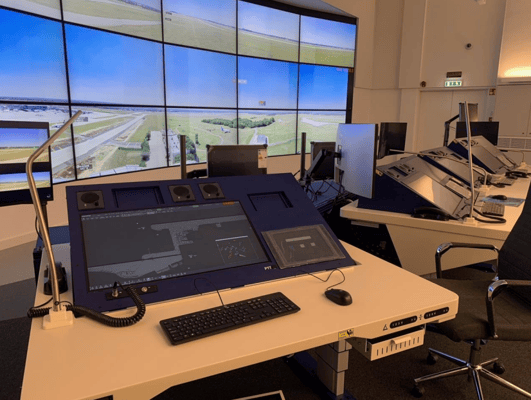"Climb to flight level 360 for contrail prevention" is not an instruction pilots are used to hearing from ATC, but it may become much more common in future.Recently, a NOTAM from Maastricht UAC informed flight crews that controllers may give instructions to climb or descend for contrail prevention in August and September 2024.
The aviation sector accounts for 2.5% of global CO2 emissions, but contrail-cirrus warming also contributes to global warming by trapping heat in the lower atmosphere.
The industry is working hard to reduce its carbon footprint and overall impact on the climate. From optimising flight routing and Continuous Climb and Descent Operations (CDCO) to green approaches and single-engine taxiing, numerous initiatives help to reduce CO2 emissions.
Projects such as EUROCONTROL's ContrailNet and Reviate also look at non-CO2 climate factors, including contrails.
What exactly are contrails? How do they impact the climate? And how can air traffic controllers help prevent them? Let's explore.
What are contrails? How do they impact climate change?
Contrails are the condensation trails that form when hot vapour from an aircraft's exhaust mixes with cold, dry air.
Contrails trap heat reflected by the earth's surface in the atmosphere, which can have a warming effect on the climate, regionally and globally.
They can also affect the sky's natural cloud cover, increasing cloudiness. Ultimately, this disrupts natural weather and precipitation patterns, reducing sunlight's ability to reach the Earth's surface but preventing heat radiated back by the Earth's surface from escaping.
The risk of developing contrails increases at high altitudes, so higher flight levels will cause more of them.
The science behind preventing contrails
In 2021, EUROCONTROL's Maastricht Upper Airspace Control Centre (MUAC) and the German Aerospace Centre DLR ran a trial that proved we can prevent contrails with 2,000-foot vertical deviations from a flight plan. While this was a valuable insight, it is important to note that air traffic was significantly lower than usual during this period due to the COVID-19 pandemic and its travel restrictions.
In 2023, with air traffic slowly but surely increasing to pre-pandemic levels, MUAC and DLR repeated the trial with real-time simulations. This time, they involved ATCs to help them identify whether planning contrail prevention routes is more effective or if controllers should adjust flight paths in real time.
Through intelligent simulations, ATCs would 'block' the higher flight levels and reserve the altitudes more likely to cause contrails. They found that blocking them during quieter air traffic periods was more manageable than doing so during moderate and busy periods.
Pre-planning routes to avoid contrails would be more manageable for ATCOs. However, preventing contrails during busy periods (particularly in the afternoon, when contrails are most likely to form) proved challenging and needs further research.
How can air traffic management help prevent contrails?
While more research is needed to maximise the success of contrail prevention, there are several things ATCOs can do to help in the meantime. Where possible, ATCOs should:
1. Continue to block specific flight levels
The studies show that blocking high-altitude flight levels, which are home to ideal conditions for forming contrails, works. Where possible, ATCOs can and should implement this.
2. Use weather forecasts to inform decisions
ATCOs should use available weather information to adjust flights, either when planning available levels in advance or by making real-time adjustments. Instruct pilots to climb or descend to avoid the altitudes with favourable conditions for contrail formation.
It is important to note that adjusting flights in real-time can lead to additional fuel burn, which in turn offsets some of the benefits of trying to avoid contrails. Making only minor adjustments, rather than significant ones, ensures the benefits outweigh the cons, however.
3. Consider the time of day
The atmospheric conditions during the late afternoon create the peak environment for contrails to have a regional or global warming effect on the climate. If ATCOs cannot avoid the formation of contrails, they should use this information when adjusting routes and flight levels to reduce their impact.
4. Work with airlines
Collaborating with airlines is a great way to avoid the conditions that lead to contrails. Together, you can ensure you prioritise safety, efficiency, and the environment.
Want to stay ahead of the latest news and updates in ATM? Subscribe to FoxATM's weekly newsletter today.




